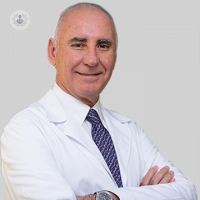Surgery to implant shoulder prosthesis
Written by:The shoulder prosthesis is a replacement technique shoulder joint to treat both fractures of the humerus neck and treatment of osteoarthritis, rheumatic or advanced and inoperable lesions rotator cuff sequelae.
The procedure requires general anesthesia. The orthopedic surgeon makes an approach on the front of the shoulder but reversed the implant prosthesis can be addressed by the lateral face. the humeral head is resected and replaced by a prosthesis with a stem which is fixed in the medullary cavity of the humerus well cement with a head pressure or metal alloy which articulates with the glenoid. This degeneration in cases of glenoid also coated with a polyethylene implant fixed with cement that.

Types of prostheses on the market
The best known are the total shoulder prosthesis for the treatment of osteoarthritis, which requires integrity of the rotator cuff muscles; cervicocefálica or anatomical prosthesis, which replaces the humeral head by a new metal head; and inverted reverse prosthesis, which in recent years has been in use for various indications from the treatment of osteoarthritis with degeneration of the rotator cuff, fracture treatment with multiple fragments and osteoporosis and in the treatment of sequelae of fractures.
What requirements must be patient for surgery?
The first of all is to have a fractured humeral head and neck that can not be treated with osteosynthesis, who has a painful and disabling osteoarthritis or rheumatoid arthritis, sequelae of fractures or other poorly consolidated. Another requirement is not to have any kind of infection at shoulder level or distance.
You need to enjoy health conditions that allow support a major surgery that can sometimes require transfusions. It is also a requirement of sufficient mental capacity to support a rehabilitation program after surgery.
What is the recovery by the implantation of these prostheses?
After the intervention it is usually spend between 24 and 48 hours in the hospital for control of bleeding and pain. The patient is discharged with the immobilized shoulder. During the three or four weeks it is recommended assisted movements and pendulous. From the fourth week the sling is removed and rehabilitation began.
Results after surgery
Generally good results, although any joint replacement procedure is not without complications being the most relevant dislocation, infection and stiffness.
In a normal evolution pain improves sensitively. As for mobility, it is recovered between 60% and 90% of full function.


